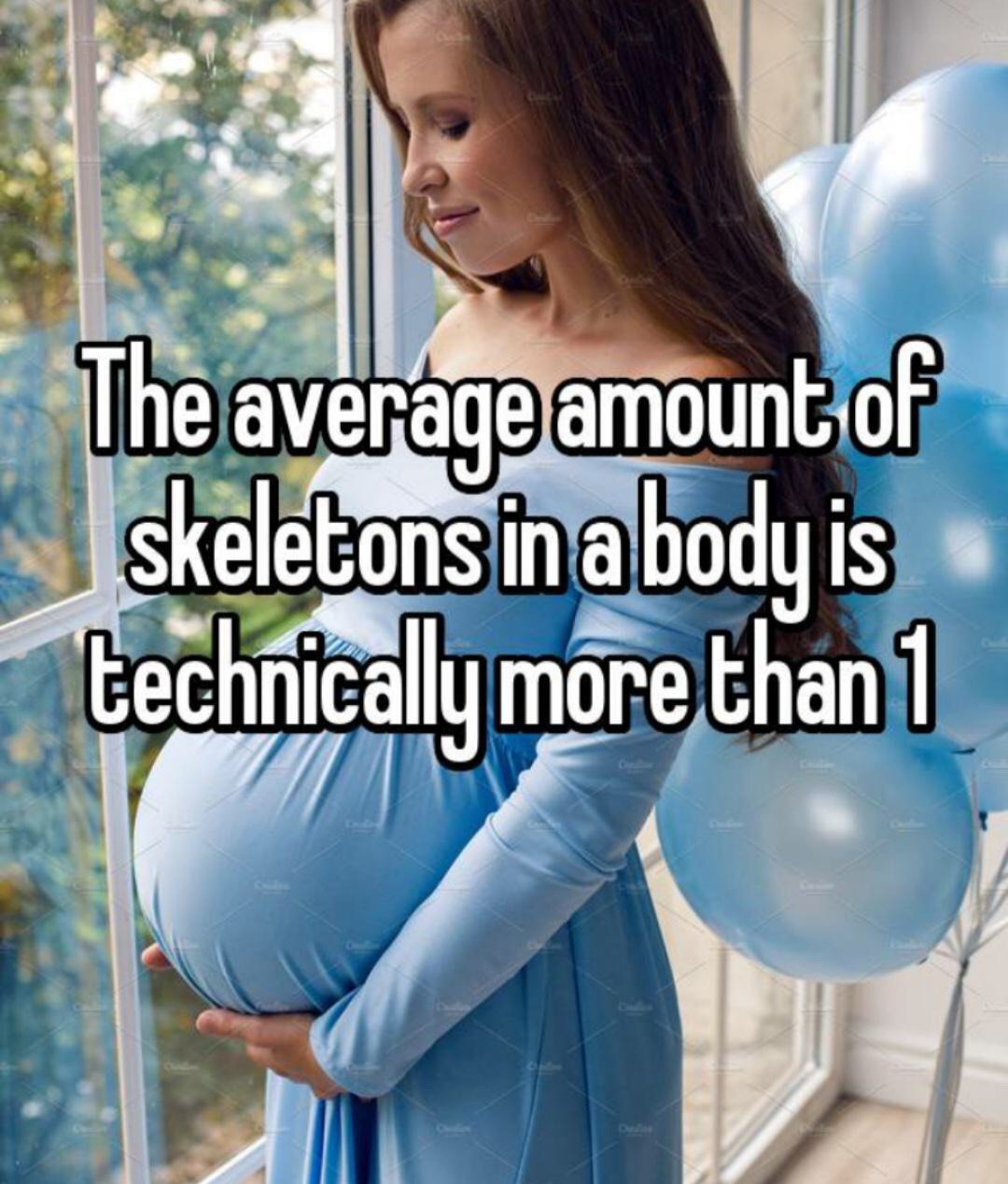You're viewing a single thread.
The number of skeletons inside of a human body is statistically greater than 1.
136 0 ReplyFuck, that's a good one
29 0 ReplyI like skull more, but both are great.
4 0 ReplyI don’t get this one…?
1 0 ReplyBebe
15 0 ReplyThis might help

15 0 ReplySkeletons, not bones
Preggerant
10 0 Reply
actually, you're forgetting about amputees and people born with fewer limbs. it's likely less than 1.
2 10 ReplySkeleton, not bones. Amputees still have.a skeleton, don't they?
26 0 ReplyI lost my skele back in 'nam
12 0 ReplyDang commies!
5 0 ReplyWe didn't make Agent Orange. That was Monsanto, and Dow.
1 0 Reply
the question is: is a skeleton that's missing pieces still "one skeleton"? And if so, at which point does it become not a skeleton? Because i'm reasonably sure you wouldn't call a severed foot a skeleton even though it is still arguably "one skeleton" that is just missing a lot of pieces.
1 0 Replyi think a skeleton is just multiple bones together that are attached. A pile of bones isn’t a skeleton, it’s a pile of bones
0 0 Replyso by your definition a severed foot is, indeed, a skeleton. huh.
1 0 ReplyIf an anthropologist found a 2-million year old intact foot, I think they’d call it a skeleton, sure.
1 0 Replyi somehow have a feeling that they'd call that a partial skeleton (aka. less than one)
1 0 Replyehh, partial skeleton, skeleton, what’s the difference? a few missing bones never hurt anybody! /s
2 0 Reply
And you’re forgetting that about 1% of the population is pregnant at any given time and has another whole human inside of them.
5 0 Replyhonestly curious about how those two would end up statistically balancing out.
1 0 ReplyThere are not very many amputees compared to pregnant woman, and babies have a lot more bones that are in your typical limb
1 0 Reply
